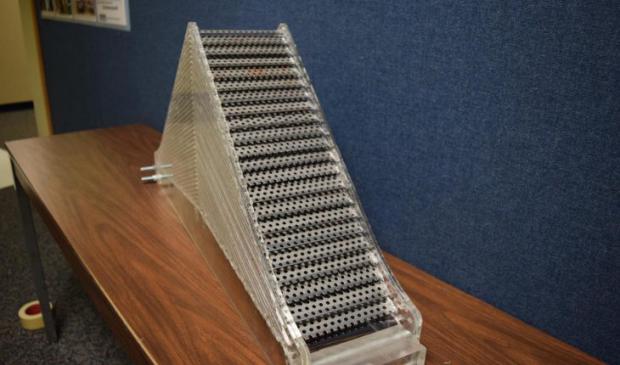
Breaking News
 Tuesday War Room LIVE: Trump Set to Shatter Deportation Record by End of First Year…
Tuesday War Room LIVE: Trump Set to Shatter Deportation Record by End of First Year…
 Parallel Polis Reborn: Freeing the Market through Decentralized Technologies
Parallel Polis Reborn: Freeing the Market through Decentralized Technologies
 Amazon goes nuclear with new modular reactor plant
Amazon goes nuclear with new modular reactor plant
 The alarming reality EXPOSED by the global internet meltdown... and why Amazon's crash...
The alarming reality EXPOSED by the global internet meltdown... and why Amazon's crash...
Top Tech News
 3D Printed Aluminum Alloy Sets Strength Record on Path to Lighter Aircraft Systems
3D Printed Aluminum Alloy Sets Strength Record on Path to Lighter Aircraft Systems
 Big Brother just got an upgrade.
Big Brother just got an upgrade.
SEMI-NEWS/SEMI-SATIRE: October 12, 2025 Edition
 Stem Cell Breakthrough for People with Parkinson's
Stem Cell Breakthrough for People with Parkinson's
 Linux Will Work For You. Time to Dump Windows 10. And Don't Bother with Windows 11
Linux Will Work For You. Time to Dump Windows 10. And Don't Bother with Windows 11
 XAI Using $18 Billion to Get 300,000 More Nvidia B200 Chips
XAI Using $18 Billion to Get 300,000 More Nvidia B200 Chips
 Immortal Monkeys? Not Quite, But Scientists Just Reversed Aging With 'Super' Stem Cells
Immortal Monkeys? Not Quite, But Scientists Just Reversed Aging With 'Super' Stem Cells
 ICE To Buy Tool That Tracks Locations Of Hundreds Of Millions Of Phones Every Day
ICE To Buy Tool That Tracks Locations Of Hundreds Of Millions Of Phones Every Day
 Yixiang 16kWh Battery For $1,920!? New Design!
Yixiang 16kWh Battery For $1,920!? New Design!
 Find a COMPATIBLE Linux Computer for $200+: Roadmap to Linux. Part 1
Find a COMPATIBLE Linux Computer for $200+: Roadmap to Linux. Part 1
Metamaterial to bend sound around large objects could open up many other cloaking applications

During the 175th Meeting of the Acoustical Society of America, being held May 7-11, 2018, in Minneapolis, Minnesota, Hanford will describe the physics behind an underwater acoustic shield designed in her lab.
Above – Scientists are now working to take cloaking devices from the dramatic realm of science fiction and make them real. Amanda D. Hanford, at Pennsylvania State University, is taking the introductory steps to make acoustic ground cloaks. These materials redirect approaching waves around an object without scattering the wave energy, concealing the object from the sound waves. During the 175th ASA Meeting, Hanford will describe the physics behind an underwater acoustic shield designed in her lab. This image is a Profile picture of the assembled perforated plate ground cloak. CREDIT Peter Kerrian
Hanford and her team set out to engineer a metamaterial that can allow the sound waves to bend around the object as if it were not there. Metamaterials commonly exhibit extraordinary properties not found in nature, like negative density. To work, the unit cell — the smallest component of the metamaterial — must be smaller than the acoustic wavelength in the study.
"These materials sound like a totally abstract concept, but the math is showing us that these properties are possible," Hanford said. "So, we are working to open the floodgates to see what we can create with these materials."
To date, most acoustic metamaterials have been designed to deflect sound waves in air. Hanford decided to take this work one step further and accept the scientific challenge of trying the same feat underwater. Acoustic cloaking underwater is more complicated because water is denser and less compressible than air. These factors limit engineering options.
After multiple attempts, the team designed a 3-foot-tall pyramid out of perforated steel plates. They then placed the structure on the floor of a large underwater research tank. Inside the tank, a source hydrophone produced acoustic waves between 7,000 Hz and 12,000 Hz, and several receiver hydrophones around the tank monitored reflected acoustic waves.
The wave reflected from the metamaterial matched the phase of the reflected wave from the surface. Additionally, the amplitude of the reflected wave from the cloaked object decreased slightly. These results demonstrate that this material could make an object appear invisible to underwater instruments like sonar.



